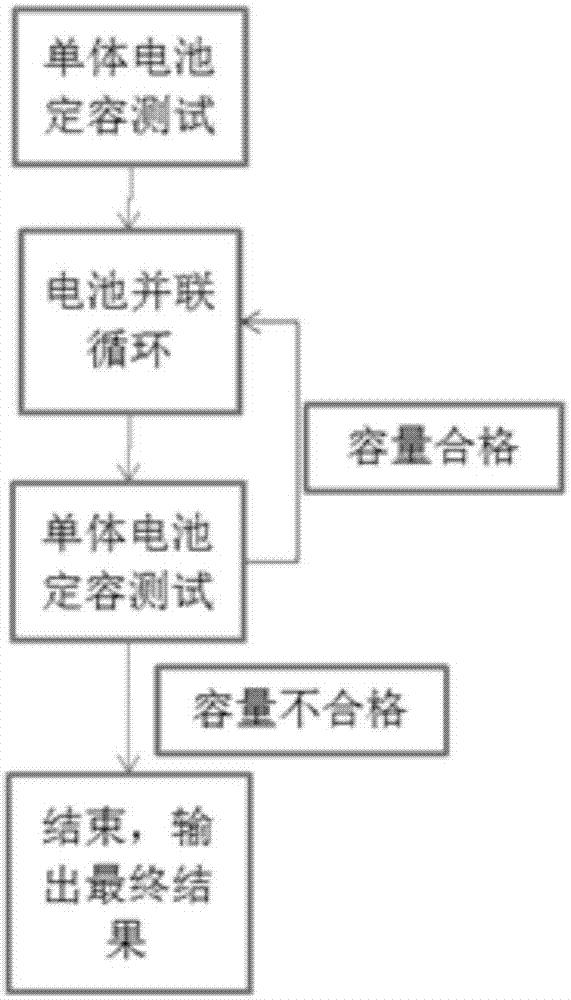Method for improving lithium ion battery cycle cabinet point utilization rate
A lithium-ion battery and cycle cabinet technology, applied in the direction of measuring electricity, measuring electrical variables, measuring devices, etc., can solve the problems of limited resources and slow research and development progress, and achieve the effect of improving utilization rate, saving time cost and resource cost
- Summary
- Abstract
- Description
- Claims
- Application Information
AI Technical Summary
Problems solved by technology
Method used
Image
Examples
Embodiment Construction
[0014] The present invention will be further described below in conjunction with accompanying drawing:
[0015] like figure 1 As shown, a method for improving the utilization rate of lithium-ion battery circulation cabinets in this embodiment includes the following steps:
[0016] S1: Conduct a separate capacity test on single batteries of the same chemical system;
[0017] S2: connect the tested single cells in parallel for cycle test;
[0018] S3: Disassemble the batteries connected in parallel, carry out constant capacity test respectively, and record the current capacity;
[0019] S4: Take out the battery with unqualified capacity;
[0020] S5: Continue to conduct cycle test and capacity test on the battery with qualified capacity until the end of battery life, record the test results, and perform linear interpolation fitting based on the parallel test data starting capacity and the last week's test capacity to obtain the capacity decay of the battery.
[0021] In the ...
PUM
 Login to View More
Login to View More Abstract
Description
Claims
Application Information
 Login to View More
Login to View More - R&D
- Intellectual Property
- Life Sciences
- Materials
- Tech Scout
- Unparalleled Data Quality
- Higher Quality Content
- 60% Fewer Hallucinations
Browse by: Latest US Patents, China's latest patents, Technical Efficacy Thesaurus, Application Domain, Technology Topic, Popular Technical Reports.
© 2025 PatSnap. All rights reserved.Legal|Privacy policy|Modern Slavery Act Transparency Statement|Sitemap|About US| Contact US: help@patsnap.com

